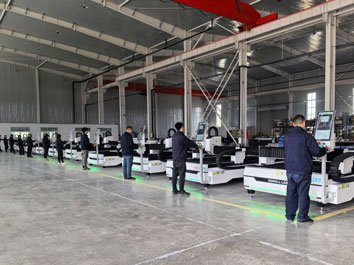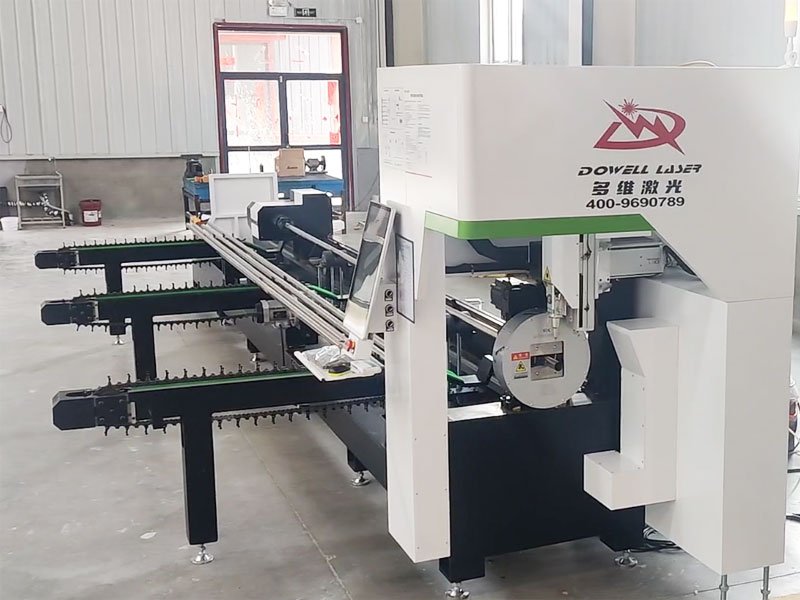Laser engraving technology has become increasingly popular in manufacturing and personalizing products, especially for aluminum engraving. For many new users who have purchased laser engraving equipment ( Also called laser marking or laser etching ), it is critical to know how to properly set up the laser engraving machine. This article will provide some basic laser engraving aluminum setting suggestions to help you better use it.
Principle of Laser Engraving
Laser engraving is to evaporate or ablate the surface of the material through a high-energy laser beam to form a pattern or text. Aluminum has become a commonly used material in many industries due to its good thermal conductivity and corrosion resistance. Mastering the appropriate engraving settings can ensure that the aluminum surface achieves the desired effect.

Key Parameters for Fiber Laser Engraving Aluminum Settings
Power: The energy of the laser beam. The higher the power, the faster the engraving speed and the greater the depth.
Speed: The speed at which the laser head moves. The faster the speed, the shorter the engraving time, but may result in rough edges.
Frequency: The frequency of the laser pulses. The higher the frequency, the finer the engraving effect.
Focus: The position where the laser beam is focused. Even the slightest change in the focus position will affect the engraving effect.
Air Assist: Air Assist can blow away the molten metal and improve the engraving quality.
Fiber Laser Engraving Aluminum Settings
| Material Type | Power (W) | Speed (mm/s) | Frequency (kHz) | Line Spacing (mm) | Fill Type |
|---|---|---|---|---|---|
| Aluminum (Bare Metal) | 100 | 1500 | 350 | 0.02 | Unidirectional |
| Aluminum (Anodized) | 100 | 2000 | 550 | 0.03 | Unidirectional |

Laser Engrave Aluminum Settings Tips
1.Choose the right laser machine:
Different laser machine types (CO2 laser, fiber laser) are suitable for different materials and thicknesses.
Lasers for Laser Engraving Aluminum:
CO2 laser:
- Suitable for engraving non-metallic materials, including wood, leather, plastic, etc.
- The engraving effect on aluminum is poor, and it usually needs to be coated with an absorption layer.
- Advantages: relatively low price and wide adjustable power range.
Fiber laser:
- Suitable for engraving metal materials, including stainless steel, titanium alloy, aluminum alloy, etc.
- Good beam quality, small focused spot, high engraving accuracy.
- Advantages: high efficiency and low maintenance cost.
UV laser:
- Short wavelength, small spot, suitable for fine micro-machining.
- Widely used in electronic components, medical devices and other fields.
- Advantages: high processing accuracy and small heat-affected zone.
2.Design pattern
- Choose the right software: Commonly used design software includes AutoCAD, CorelDRAW, Adobe Illustrator, etc.
- Create vector graphics: Convert the design drawing to vector format to ensure the accuracy and details of the engraving.
- Adjust parameters: Adjust parameters such as line width and font size as needed.
3.Prepare aluminum
- Choose the right aluminum: Choose aluminum of different thickness and hardness according to design requirements.
- Clean the surface: Clean the surface of the aluminum thoroughly with alcohol or other detergent to remove impurities such as oil, dust, etc.
- Fix the material: Fix the aluminum material firmly on the workbench of the laser engraver to prevent it from moving.

4.Set laser parameters
- Power: Adjust the laser power according to the thickness of the aluminum material and the engraving depth. Too much power can easily burn the material, while too little power will slow the engraving speed.
- Speed: Too fast speed may cause rough edges, while too slow speed will be inefficient.
- Focus: Adjust the laser focus position to ensure that the laser beam is focused on the surface of the material.
- Airflow: Turn on the auxiliary airflow to blow away the molten aluminum chips and improve the engraving quality.
5.Import the design drawing
- Connect the device: Connect the computer to the laser engraver and ensure that the driver is installed correctly.
- Import file: Import the designed vector image into the control software of the laser engraver.
- Calibrate: Perform calibration to ensure that the design is consistent with the actual engraving position.
6.Start engraving
- Preview: Before starting engraving, preview to confirm whether the engraving path and parameter settings are correct.
- Start engraving: Click the Start button and the laser engraver will engrave according to the set parameters.
- Monitoring process: During the engraving process, observe closely and stop immediately if there is any abnormality.
7.Cooling and post-processing
- Cooling: Wait for the aluminum to cool naturally after engraving.
- Cleaning: Remove the residue on the surface of the aluminum.
- Inspection: Check the engraving effect. If there is any dissatisfaction, you can perform secondary processing.

Aluminum Laser Engraving Precautions
Safety first: High temperature and harmful gases will be generated during laser engraving. Be sure to wear protective equipment such as protective glasses and gloves, and ensure good ventilation.
Material compatibility: Different types of aluminum alloys have different requirements for lasers, so tests are required.
Equipment maintenance: Regularly maintain the laser engraving machine to ensure the normal operation of the equipment.
Common Problems and Solutions
| Common Problem | Possible Causes | Solutions |
|---|---|---|
| Rough Cut | Speed too fast or power too low | Reduce speed or increase power |
| Unclear Pattern | Improper frequency setting | Try increasing frequency for finer detail |
| Material Burned | Power too high or speed too slow | Reduce power or increase speed |
Conclusion
Mastering the fiber laser settings for engraving aluminum is essential for beginners. By adjusting parameters such as power, speed, frequency, and combining practical testing, you will be able to achieve the ideal engraving effect. As you gain experience, you can further explore more complex designs and techniques to improve your laser engraving skills.
FAQ
Why is the Engraved Pattern not Clear?
Possible reasons: too low power, too fast speed, inaccurate focus position, insufficient pattern resolution.
Why does the Aluminum Material Deform Suring Engraving?
Possible reasons: too high power, insufficient cooling.
Why are there Burrs on the Engraved Edge?
Possible reasons: too slow speed, insufficient airflow.



